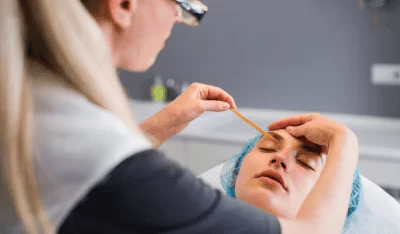Following waxing, waiting 24 to 48 hours before swimming is advisable. This timeframe allows the skin to recover and lessens the risk of potential irritation. Waxing removes hair from the root, leaving the skin vulnerable to irritants. Immediate contact with pool chemicals can lead to redness and itching. Waiting reduces the chances of ingrown hairs and inflammation. Taking care post-wax includes avoiding hot tubs, ensuring dryness before swimming, and applying soothing skincare products. For best results, consider specific care needs for different waxed areas like the face, underarms, bikini region, legs, back, and chest. Vienna waxing offers professional services for those seeking quality hair removal to ensure the best results and care for your skin.
Ideal Wait Time After Waxing
Following a waxing session, waiting at least 24 to 48 hours before swimming is recommended to allow the skin to heal and minimize the risk of irritation. Waxing involves the removal of hair from the root, which can leave the skin vulnerable to external factors, including waterborne bacteria and chemicals in swimming pools. The skin becomes more sensitive post-waxing, and immediate exposure to chlorine or other pool chemicals can lead to redness, itching, or even infections.
Swimming too soon after waxing can also increase the likelihood of ingrown hairs. When hair is removed from the root, it grows back with a finer tip, making it easier to curl back into the skin rather than growing out normally. This can result in painful bumps and inflammation. Waiting a day or two before swimming allows the skin to recover and reduces the chances of experiencing these uncomfortable side effects. Patience is critical to maintaining smooth, healthy skin after a waxing session.
Potential Risks of Swimming Too Soon
Prematurely engaging in swimming after waxing can expose the skin to potential risks and complications due to its heightened sensitivity post-hair removal. Waxing, a method of hair removal that uproots the hair from the follicle, leaves the skin vulnerable to various irritants. Chlorine in swimming pools, along with bacteria and other chemicals in the water, can cause irritation, redness, and even infection when they come into contact with freshly waxed skin. The skin barrier is compromised after waxing, making it more susceptible to these external aggressors.
Swimming too soon after waxing can also lead to ingrown hairs. When hair follicles are freshly waxed, they are more likely to curl back or grow sideways into the skin instead of protruding outward. The friction and pressure exerted on the skin while swimming can exacerbate this issue, potentially causing painful ingrown hairs. To prevent these risks, it is advisable to wait for the skin to calm down and the hair follicles to close before exposing the waxed area to swimming pools or other bodies of water.
Tips for Swimming Post-Waxing
After waxing, following specific guidelines to guarantee a safe and comfortable swimming experience is important. To begin with, it is advisable to wait at least 24 hours before swimming post-waxing. This allows the skin to recover and reduces the risk of irritation or infection. Moreover, avoiding hot tubs, saunas, or any activities involving prolonged exposure to heat immediately after waxing is essential, as this can further aggravate the skin.
Before swimming, make sure that the waxed area is arid. Moisture can increase the chances of bacteria entering the hair follicles, leading to potential infections. A soothing moisturizer or aloe vera gel can help hydrate the skin and reduce any redness or inflammation caused by waxing.
Choosing the right swimwear is also important post-waxing. Opt for loose-fitting, breathable fabrics to prevent friction and irritation on freshly waxed skin. Finally, remember to gently exfoliate the skin a few days after waxing to prevent ingrown hairs and maintain smooth skin for your next swim.
Special Considerations for Different Waxing Areas
When waxing different body areas, it is essential to consider specific care routines tailored to each region’s unique characteristics and sensitivities. The face requires gentler wax or specific post-waxing products to soothe the skin and prevent irritation. For the underarms, keeping the area clean and dry is essential to prevent bacterial growth and potential infections. The bikini area is susceptible, so using a high-quality wax and maintaining proper hygiene is vital to avoid ingrown hairs and irritation.
Exfoliation before waxing the legs can help prevent ingrown hairs, while moisturizing afterward can keep the skin smooth and hydrated. The back and chest areas may be prone to breakouts post-waxing, so using salicylic acid or aloe vera products can help calm the skin. Overall, understanding the unique needs of each waxed area and following a tailored aftercare routine can help maintain smooth, healthy skin after waxing.
Other Waxing Tips:



